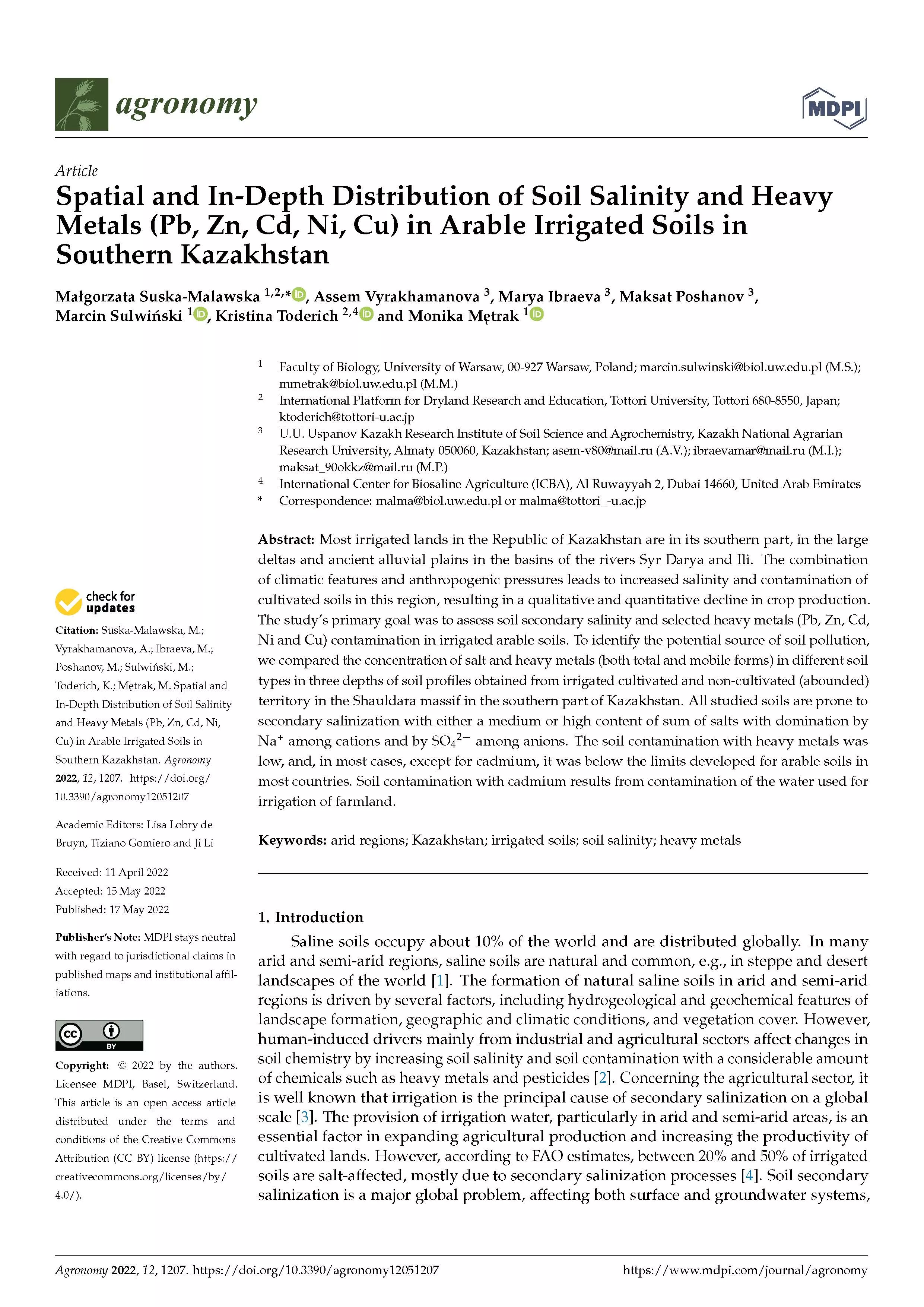Spatial and In-Depth Distribution of Soil Salinity and Heavy Metals (Pb, Zn, Cd, Ni, Cu) in Arable Irrigated Soils in Southern Kazakhstan
Most irrigated lands in the Republic of Kazakhstan are in its southern part, in the large deltas and ancient alluvial plains in the basins of the rivers Syr Darya and Ili. The combination of climatic features and anthropogenic pressures leads to increased salinity and contamination of cultivated soils in this region, resulting in a qualitative and quantitative decline in crop production.
The study’s primary goal was to assess soil secondary salinity and selected heavy metals (Pb, Zn, Cd, Ni and Cu) contamination in irrigated arable soils. To identify the potential source of soil pollution, we compared the concentration of salt and heavy metals (both total and mobile forms) in different soil types in three depths of soil profiles obtained from irrigated cultivated and non-cultivated (abounded) territory in the Shauldara massif in the southern part of Kazakhstan. All studied soils are prone to secondary salinization with either a medium or high content of sum of salts with domination by Na+ among cations and by SO42- among anions. The soil contamination with heavy metals was low, and, in most cases, except for cadmium, it was below the limits developed for arable soils in most countries. Soil contamination with cadmium results from contamination of the water used for irrigation of farmland.
Year
2022
Publication Source
Agronomy
Publication type
Scientific Paper
Volume/Chapter/Issue
12











